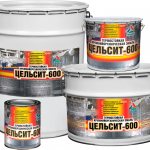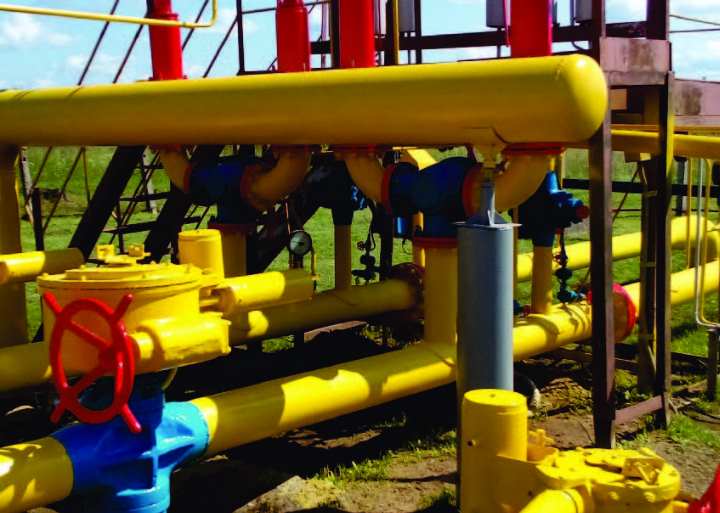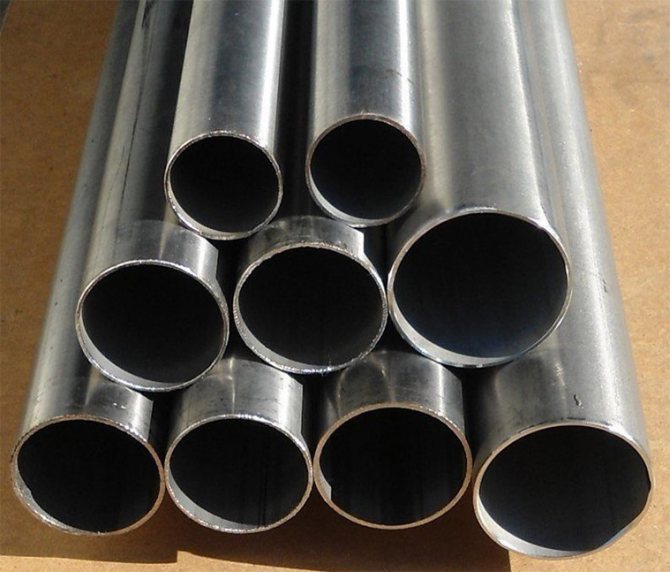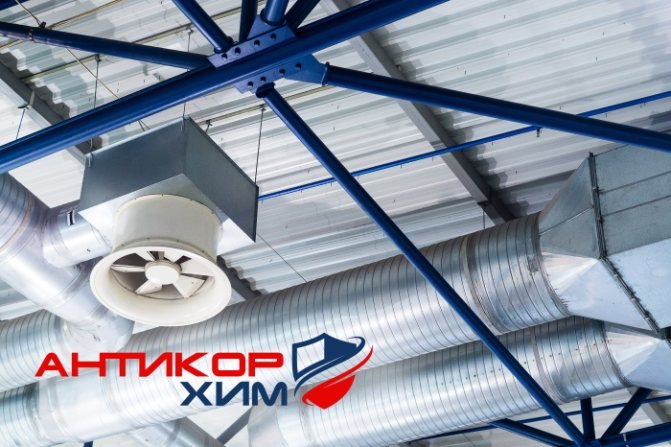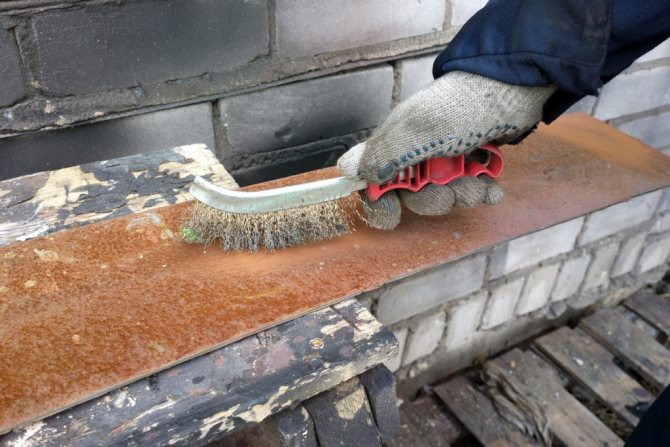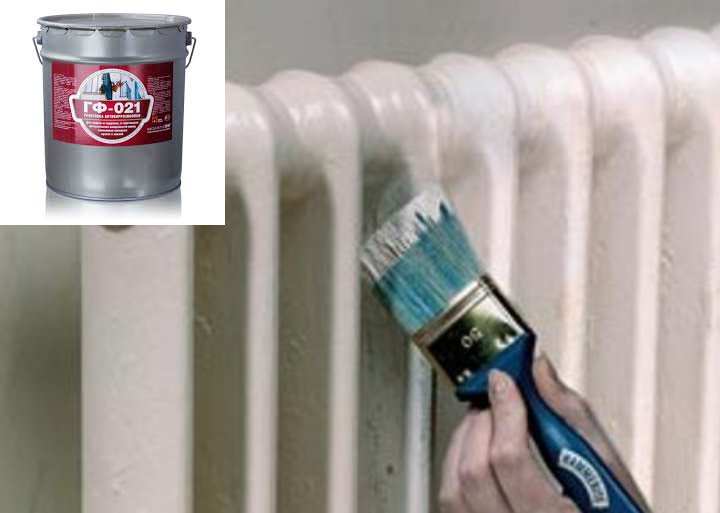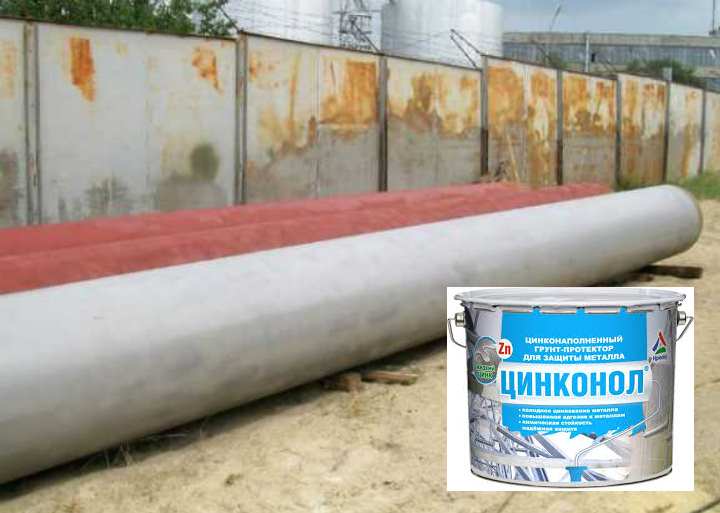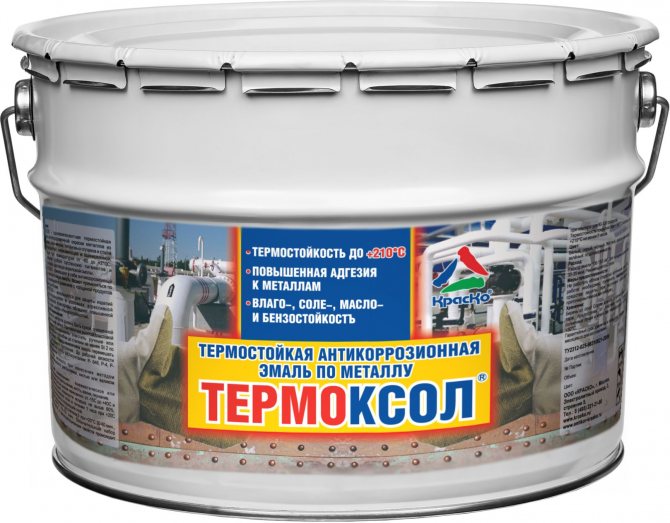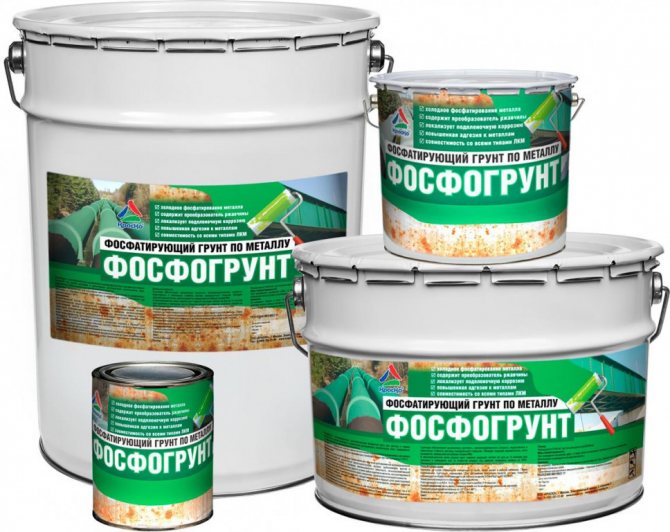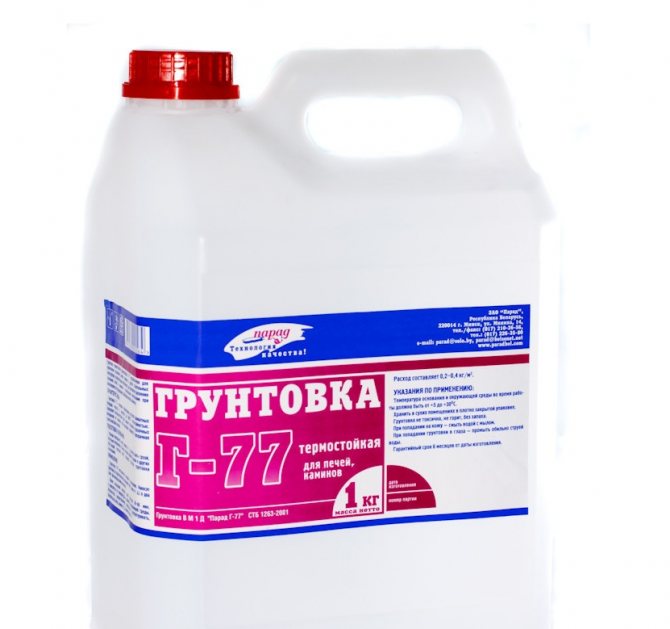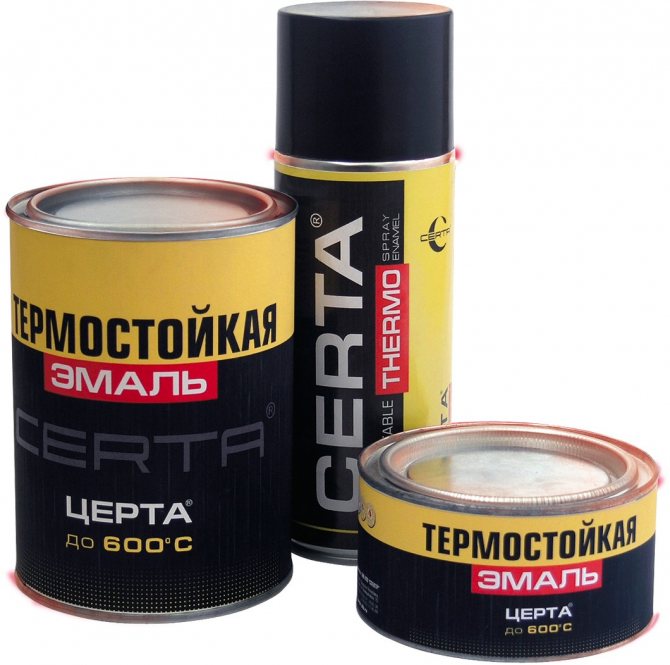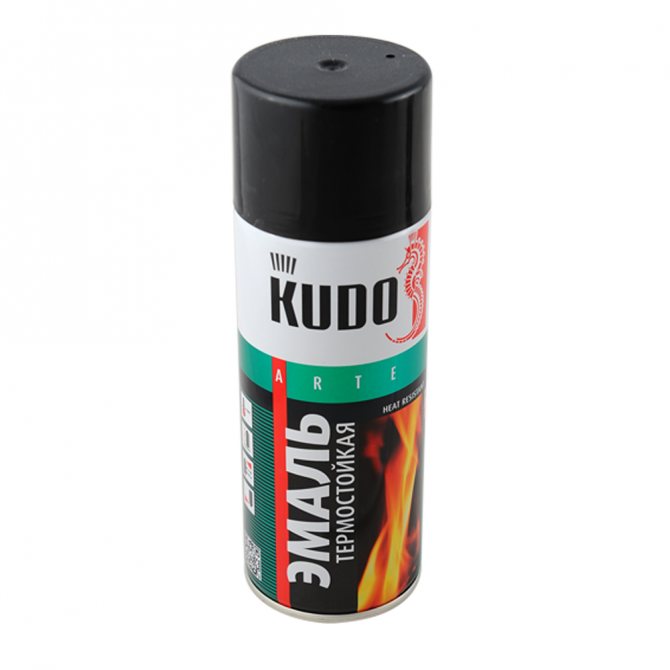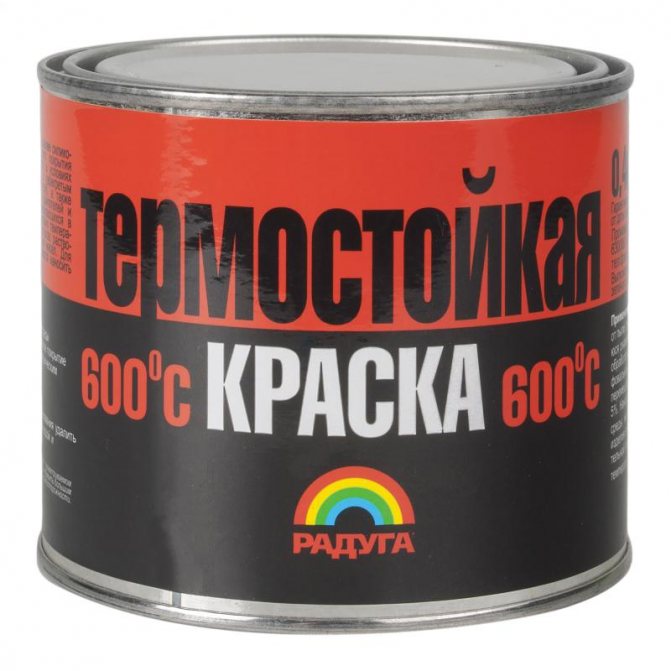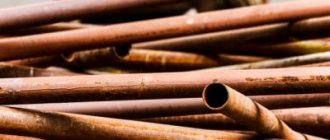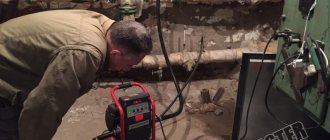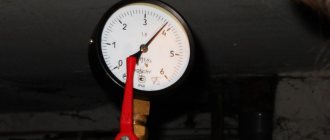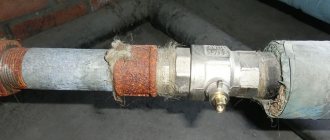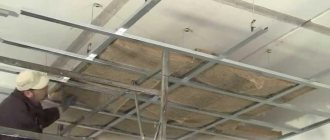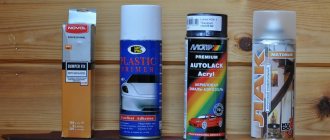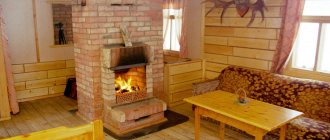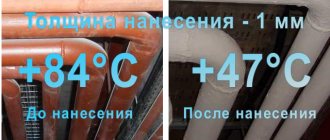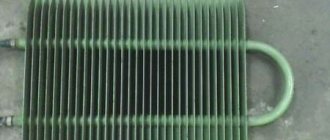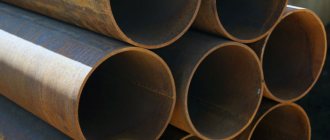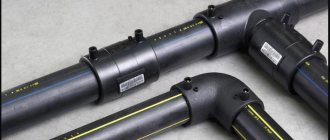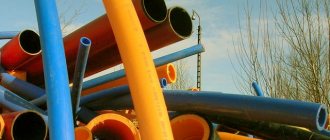Nowadays, paint for heating pipes can give a unique look to pipelines and batteries, which will last for a long time. The purpose of the paint is to protect against corrosion and to give the visible part of the system the desired color, as well as a decent appearance in general. To obtain a high-quality painting of batteries and pipes, it is necessary to properly prepare their surfaces for the painting process.
We will tell you in detail about the choice of paint for heating pipes, as well as about the technology of their coloring in our article.
Choice of paint
Now let's find out how to paint heating pipes. The final result will directly depend on the choice of the right paint. When choosing a paint, it is necessary to proceed from the requirements that apply to them. So, paint for heating pipes and batteries should have:
- high temperature resistance (not lower than 100 degrees);
- abrasion resistance;
- not be toxic;
- resistance to aggressive environments.
Types of paints for heating pipes
There are commercially available paints that are specially designed for painting heating pipes:
- Acrylic enamels. They are produced on the basis of organic solvents, therefore, painting heating pipes with their help and the drying process will be accompanied by a characteristic smell of a solvent. However, this justifies the end result - glossy shine and long service life.
- Alkyd enamels. When used, they also emit an unpleasant odor, which can later be felt during the operation of the heating system. But on the other hand, the surface painted with such paint will be resistant to abrasion and high temperatures. It should be noted that manufacturers produce a fairly wide range of colors of this paint, which can satisfy any demand. Due to this, it is quite popular among consumers.
- Water dispersion paints. Painting heating pipes with waterborne paints, which are specially designed for this purpose, are the most common choice. When working with them, a specific smell is not felt, moreover, they dry very quickly.
There is also oil paint, but now it is little used for such purposes.
What paint to paint? The final choice is always up to the consumer.
The best manufacturers of paints for painting heating pipes
Manufacturers, both domestic and foreign, produce a wide variety of paints that differ in color and quality. The price most often depends on the brand of paint and the manufacturer. Among the countries that produce paints that can satisfy virtually any tastes, it should be noted Holland, Germany, Sweden, etc.
So, the enamel Radiator Paint produced in Holland has a white color and after painting allows you to get a flawless glossy surface.
Enamel Heizkorperlack and paint Mipatherm 600 (Mipatherm 600) made in Germany are famous for their quality, do not require preliminary surface preparation. Within 3-4 hours after applying such paints, you can turn on the heating system, which is an advantage if the repair is carried out in winter.
Alkyd paint Elementfarg Alkyd (Elementfarg Alkyd) made in Sweden is used both as a primer and as a paint, which is very important, because no need for a separate primer. It is enough to paint the surface in 2 layers.
Galvanized pipe paint
Not all products are suitable for painting the surface of galvanized pipes.
Galvanized paint must meet the following requirements:
- Be flexible.When heated or cooled, the steel product slightly changes its shape. In this case, the paint should not crack or chip.
- Do not react with zinc in order not to damage the protective film.
- Have additives that improve adhesion to the smooth surface of rolled metal.
- Be resistant to adverse weather conditions.
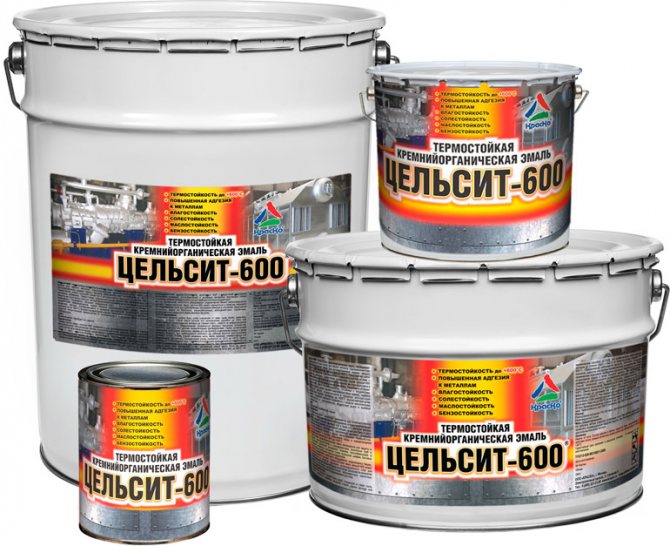
For painting galvanized pipes, 4 types of dyes are used:
- acrylic;
- alkyd;
- vinyl;
- latex (rubber).
These products are easy to apply, contain anti-corrosion additives, have a strong water-repellent property, and are resistant to temperature extremes.
Acrylic enamels are time-tested, inexpensive. But the main advantage is that they do not contain substances that have a destructive effect on the zinc coating.
Alkyd paints are durable, with a rich color palette, but contain resins that are aggressive to steel surfaces, so it is recommended to apply them over a primer (but not alkyd).
Vinyl dyes are weather resistant and can withstand temperatures up to 70 ° C. The main disadvantage of these funds is the high price.
Latex or rubber paint is made on the basis of acrylic. Its advantages are environmental friendliness, high elasticity, excellent decorative properties. The tactile sensation of the top layer of such a coating resembles rubber.
Note! Oil paints provide reliable protection against moisture, but their use is undesirable due to the fact that they corrode zinc.
When choosing a composition for painting, you need to take into account the purposes for which tubular products are used and what are the conditions for their operation. So, if it is a harsh, aggressive environment, a material with fire retardant or electrically conductive properties is used.
When painting water supply lines, one must not forget that condensation constantly forms on pipes with cold water, and dyes that are afraid of heating are not suitable for hot water supply.
Heating pipes painting
Preparation for painting: cleaning and priming the surface of pipes and radiators
Prepare pipes for painting according to the following instructions:
- Before painting the surface, it must be thoroughly cleaned - remove the old layer of paint and primer, clean up the places where rust has formed to a metallic sheen. Get rid of dust and dirt with a wet cloth and a brush. Old paint is disposed of with a spatula and special cleaning solutions.
- The rinsing solution is applied to the surface of the radiator and wrapped in a softening film. After a while, the paint can be easily removed with a spatula or drill, with a metal brush put on it.
- After that, the surface is treated with sandpaper and degreased with white spirit.
- Next, the surface is treated with an anti-corrosion primer. Its purpose is not only to protect against corrosion, but also to increase adhesion - the adhesion of paint to metal. A primer with an alkyd base is suitable for this.
Now the surface is ready, in fact, for applying paint - it will fit perfectly on such a surface.
Nowadays the industry offers special two-in-one and three-in-one primers. They usually contain a primer, color pigments and a rust converter. Such primer paints are applied to the surface of a pipe or battery without preparation for painting.
Instructions for self-painting heating pipes
Next, let's look at how to paint heating pipes. You can, of course, invite a professional painter for these purposes, but it is much cheaper, and it will not be difficult to paint with your own hands.
So, how to paint the pipes of the heating system correctly:
- Getting started, first of all, it is necessary to protect the floor from dirt.For this, they usually use unnecessary newspapers, paper, cloth, which are laid directly under pipes and batteries.
- Also, before the painting process, you will need to select brushes. Brushes must be small in size with soft bristles, straight and curved.
- The paint starts to be applied from the top and moves towards the bottom. Cover the battery and pipes with paint from all sides, then apply a second layer of paint solution. In this case, you will get a perfectly even painted surface. With two-layer painting, you must wait until the first layer dries up, and only then apply the second.
Painting can also be carried out using a spray gun and from a spray can. When painting with a spray gun, it is advisable to remove the battery in order to carefully paint over all hard-to-reach places. When using a can with heat-resistant paint, the surface of the pipes and radiator is painted with high quality and very quickly. Additional instructions on how to spray paint surfaces can be found on its packaging. Usually, the balloon makes zigzag movements from top to bottom at a distance of about 30 cm from the surface.
Do I need to enamel galvanized pipes and what paint to use
The use of a specialized paint for galvanized pipes is not considered mandatory, since the steel is already protected by a zinc coating from the negative effects of atmospheric agents. The protective layer protects the metal from contact with an aggressive environment (oxygen and moisture), preventing corrosion and extending the service life of products made from it.
Paint
When thinking about whether it is necessary to paint galvanized pipes, it must be borne in mind that the protective zinc coating itself is also subject to corrosion. Over time, a fine white powder appears on the surface of a product covered with a thin layer of zinc, which is formed as a result of the chemical reaction of this element with oxygen in the presence of water (humid air).
White rust gradually eats away at the protective shell, leaving the metal vulnerable and shortening the life of the entire heating or water system. It is especially important to protect the places of welds, from which zinc evaporated during welding, as well as threaded joints, devoid of a zinc layer during machining.
Features of the primer for heating pipes
Metal pipes are used for:
- Gutter devices.
- Laying of communications.
- Installation of load-bearing structures.
Compared to other materials, metal has:
- Greater strength.
- Durability.
However, a significant drawback is that it is defenseless against corrosion. Simple painting of metal pipes with oil paint does not give the desired effect: the coating will quickly begin to peel off, fall off, and corrosion will begin to form on the surface due to the aggression of the external environment.
Tip: For long-term operation, the pipes must not only be painted, but they must be completely processed with the application of a primer.
A primer for steel pipes makes it possible to:
- Provide anti-corrosion protection to the metal.
- Improve moisture insulation.
- Convert rust.
- Apply as a stand-alone coating.
- Improve adhesion to base coat and pipe.
- Compensate for the difference in coefficient of thermal expansion between the metal base and the paintwork.
- Reduce paint absorption, which reduces the consumption of the final enamel coat.
The correct choice of primer for metal depends on many factors.
The purpose of the product is taken into account:
- If these are central heating radiators, all metal pipes are subject to temperature changes.
- When supplying cold water, the pipes will be cold and damp.
- The hot water in the pipes creates a high temperature on the surface, which makes them too dry.
- Pipes can be gas.
- Placed on the street, which creates the vulnerability of the elements from the effects of atmospheric phenomena.
- To be located indoors.
The type of primer is influenced by the quality and grade of steel:
- Insulating primers. Such materials are made on the basis of conventional paints - white, red lead, with the addition of special additives to the composition, it can be an epoxy or alkyd mixture. After application, a strong thin film is created on the metal, which prevents the surface from contacting the atmosphere. Used for pipes installed outdoors.
Alkyd primers are the most popular and have several advantages:
- used as an independent coating;
- have high anti-corrosion qualities;
- transform rust;
- provide protection against temperature extremes;
- guarantee the durability of the pipe.
The epoxy primer is designated as EP-0010, and GF-021 is alkyd.
- Two-component phosphating-type primers Is a mixture of active ingredients. When applied to metal, it enhances its passivation, is used to process any steel pipes, and has high adhesion. Often used before the application of any topcoat to enhance its protective properties and reduce paint consumption. Primer marking - VL-02.
- Passivating primers change the electrochemical characteristics of the metal, slow down the formation of corrosion and the appearance of rust. Mostly used for wet pipes when laying communications. It is marked - ГФ-0119.
- Soil protector Is a metal suspension dissolved in a paint and varnish base. Include connections:
- lead;
- zinc;
- zinc and magnesium alloy.
On painted surfaces, tread primers create an invisible film that protects the metal base from scratches. Material marking - EP-0284, EP-057.
- Inhibitors are a new generation of protective primers-enamels, are made on an oil and water basis, effectively and reliably protect pipes located outdoors or in conditions of high humidity from the appearance of corrosion. Oil-soluble ones are labeled as EP - 180.
- Primer-converter used for application on rust, phosphoric acid is used as a basis in the manufacture. A mixture of iron oxide or rust converts to iron phosphate. After this chemical reaction, a protective insoluble film is formed, which can partially repair the coating that has been pitted by corrosion. Marking of compounds: ХВ-0278 or ЭП-0199.
Advice: Anti-corrosive mixtures are used for ferrous metal pipes, and more adhesive ones for non-ferrous pipes.
Provides a choice of primer and the temperature of the contents in the pipes:
- Up to 60 ° C. Radiators of central heating and pipes for hot water supply have such a temperature regime. Subject to processing technology, you can use primers made on a paint-and-varnish basis. The paint lays on the coating evenly, which reduces material consumption, it does not fade in the sun, does not flake off.
- Up to 100 ° C. Such compounds are used in private homes. Here, the owners can regulate the heating temperature themselves, the radiators heat up, while over 60 ° C. The primer is used as usual, but the decorative coating should be chosen with pigments that are resistant to fading.
- Soil mixtures that can withstand temperatures over 300 ° C. They are used only in industrial enterprises.
Outcomes
After it dries, one to three more layers are added as needed. The consumption of the primer will decrease with each new layer. It is advisable to carry out the processing process on products with room temperature. Heating radiators should be turned off for a while, and this will ensure uniform drying, and also increase the quality of work and reduce the consumption of funds.
On the surface treated in this way, decorative paintwork will fit perfectly evenly, without streaks and streaks, and will also provide pipes with additional protection against temperature and moisture changes, and will greatly increase the service life. If you take the time and correctly carry out all the processing steps before painting, then the heating systems and plumbing will not need to be replaced for a long time.
A primer for the pipe surface is a mandatory processing step, which makes it possible to consolidate the future coating and provide protection against corrosion. The primer should be chosen depending on the purpose of the pipes, be it a gas pipeline or a radiator.
How to calculate the amount of primer
Tip: When purchasing a primer solution, you need to find out what is its consumption per square meter of metal. Usually it is about 100 grams.
To correctly calculate the primer for pipes, the following are taken into account:
- The outer diameter of the pipe is d.
- Its length is h.
The coverage area S is calculated by the formula: S = π × d × h, where π ≈ 3.14.
Substituting the required values in the formula, the required coverage area is obtained. By multiplying it by the consumption for one square meter, the approximate consumption of the primer is determined.
Epoxy product for air ducts - "AnticorChem"
Epoxy enamel - "AnticorChem" is suitable for painting internal and external structures of ventilation systems. It is chosen for zinc-coated boxes, air duct pipes, tees, bends, silencers, air intake grilles, and other parts. When buying our material, you do not need to look for a suitable primer, since enamel simultaneously plays the role of a topcoat and a primer layer.
High adhesion of the compound to galvanized, ferrous and non-ferrous metals allows working with different types of substrates. The product is resistant to the action of acid solutions, ammonia, alkalis, alcohols, industrial oils.
Moisture, heating and cooling do not destroy its protective barrier. Due to its high strength, you can apply it on elements subject to friction - concrete stairs, platforms, handrails, hatches, etc.
In an industrial environment, the paint for protecting steel ventilation pipes and ducts has a service life of about 15 years.
How to prime pipes
The process of preparation and priming of pipes takes place step by step.
The work instruction has some features:
- The walls and floor of the room are closed.
- The pipe surface is thoroughly cleaned from old paint and rust. For this, metal brushes, brushes are taken. The cleaning process is shown in the photo.
- Old paint is treated with a special solution to soften it.
- Scraped off with a spatula.
- The surface is thoroughly cleaned with an abrasive cloth until smooth and shiny.
- The pipe is washed and dried.
- Degrease with a suitable product.
- The primer is applied in the selected way, using:
- brush, suitable for small diameters with irregularities. This takes more primer and processing time;
- small roller, effectively reducing the consumption of the mixture;
- spray gun or pressurized spray can. The price of paint in a spray can is much higher with a small volume, which is not cost-effective.
Advice: It is recommended to apply at least two layers of priming. On the first coat, small irregularities are carefully filled.
The primer for pipes must be carried out before the final coating, which allows the latter to anchor well. Processing is carried out at room temperature with the heating turned off. This ensures correct drying, improves surface quality and reduces primer consumption. The processing process itself is offered in the video.
Correctly executed coating on steel pipes is a guarantee of their long-term use.
Temperature norms
The next question that arises among consumers: under what temperature conditions are heat-resistant primers used so that they do not lose their properties? In this case, you need to familiarize yourself with the requirements that occur when painting surfaces with different temperature conditions:
- Temperature indicators do not exceed 600 ° С. According to all standards, such a temperature is inherent in objects that are used in the arrangement of autonomous heating. The permissible deviations in the temperature regime of the radiators reach from 500 to 700 ° C. In this case, it is allowed to use a conventional primer that does not have the property of thermal stability. At the same time, there is no need to fear that defects such as burnout and flaking of paint will subsequently arise.
- Heating devices up to 1000 ° С. In these cases, you can also use materials that do not differ in special thermal characteristics. But when choosing a paint, we pay attention to the degree of stability of the pigments. At this temperature, the color burnout process is possible.
- Over 1000 ° C to 3000 ° C. With such temperatures, you should think about the characteristics of the material in terms of thermal stability. Especially if the need to perform the priming process is prescribed in the instructions for the varnish-and-paint composition. In this case, it is necessary to acquire exactly the primer that will not lose its qualities when the surface is heated to 3000 ° C.
- The temperature exceeds 3000 ° C. In such conditions, special pigments are used, adapted precisely for such conditions. In this case, the use of a primer can spoil the situation. In this mode of operation, the applied primer layer can provoke paint peeling.
The choice of a heat-resistant primer depends on the heating temperature of the product to be painted.
Preparing batteries for painting
An important role is played by the preparation of radiators for painting. First you need to determine how dirty the battery is, and thoroughly clean it. They get rid of dirt with a cloth, a brush, an atomizer is effective. Even if the radiator is new, it still needs to be degreased, treated with sandpaper, after cleaning it from dust. The paint will crack, partially begin to chip off, and will quickly lose the integrity of the layer if applied to an unprepared surface.
To perfectly clean the radiators, you need to remove the old layer of paint, completely get rid of the soil. Areas affected by rust need special attention. It is important to process them to metal.
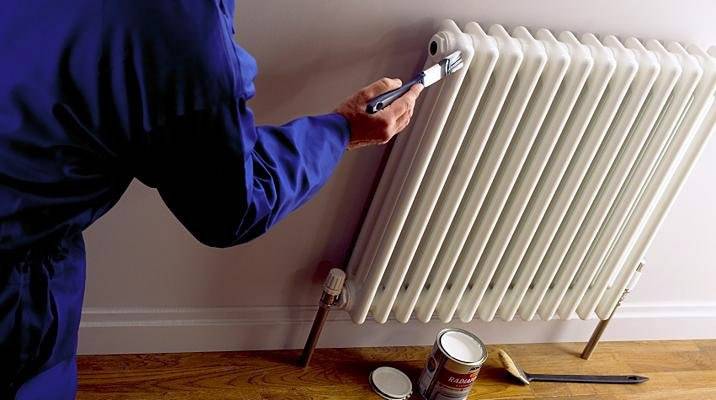

Tools and materials for painting radiators
The tools and compositions used in the preparation of the radiator are of great importance. A special brush attached to the drill will ensure optimal treatment of the battery. Washing solutions also work effectively: it is good to apply them on the entire dry surface of the radiator with a paint brush, and then wrap it with foil. The paint will soften and remove easily after an hour, you don't even need to use a drill - a regular spatula is enough. The advantage of special washes is that they are harmless to metal; they destroy only paint layers.
After there are no traces of the old paint, the surface must be treated with emery, be sure to degrease. For this, any slightly alkaline solution, white spirit, is suitable. At the final stage of preparation, a layer of anti-corrosion primer is applied to the radiator. After completing all these actions, you can be sure: the surface is ready, the paint will adhere perfectly to it, it will hold reliably and for a long time.
Interesting: unusual tools to help you paint batteries
Substrate preparation
Experienced painters know that the durability of the paint film for application to galvanized carbon steel air ducts is determined by the quality of the preparatory work. We have prepared a table with a detailed description of each of the stages.
| Stage | Name | Description |
| 1 | Removing old film / cleaning parts from accumulated dirt, dust and rust. | If you are painting older structures, it is important to remove the past material. Also, the substrate should be free of dust and other inclusions. |
| 2 | Degreasing the base. | After assembly, the elements are left with finger marks, preservatives and other fats. For maximum adhesion, the steel is degreased using solvents - white spirit, "646" or technical detergents with surfactants. Alkaline solutions are also suitable. |
| 3 | Drying. | After removing dirt, as well as grease, you need to make sure that there is no moisture left on the parts, no traces of solvents, detergents. |
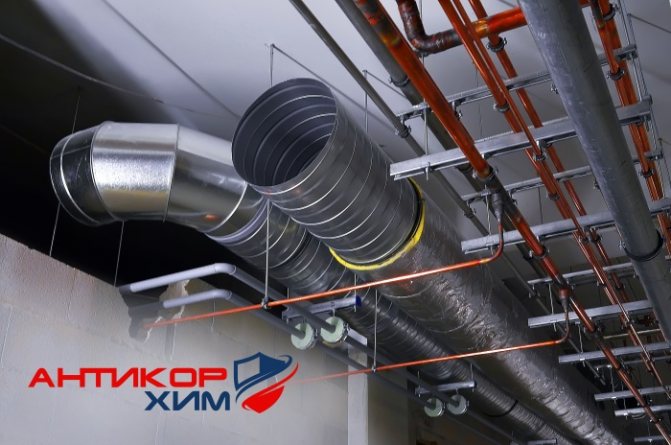

Choosing the perfect battery paint
It is important to determine which paint is best for transforming radiators. There are a number of requirements that must be met by paint applied to batteries. Heat resistance of the paint is required not lower than a hundred degrees, abrasion resistance, non-toxicity is also needed, since the batteries are regularly cleaned, and the radiator itself heats up. The paint containing metal powder instead of coloring pigments is characterized by the greatest heat resistance.
There are special paints for radiators on sale, many people use water-based enamels, heat-resistant varnishes. The selected paint must necessarily be intended for metal coating, match the primer. Good formulations are durable, do not change color, and are able to protect themselves from corrosion.
Glossy shine, long-term color fastness is ensured with acrylic enamels based on organic solvents. But they smell quite harsh when applied. Water-based paints will dry quickly, but it is important to choose them carefully, choosing special types. After painting with alkyd enamels, the uniformity of the coating is guaranteed, it will be durable and resistant to impact. However, the smell can be observed not only during the painting process, but also some time later after drying, escaping from heating.
Color selection
The decision in what color it is better to paint the radiators is to be taken by the owners. A wide range of products are now available in a variety of formulations. White enamels and silverware are considered to be classical. Some people choose colors in accordance with the interior, lighting, general style of the apartment and design features. Gold and bronze shades, delicate patterns, drawings look unusual.
Do I need to paint galvanized metal
The zinc layer on the surface of the steel reacts slowly but with the external environment. In the process of pipe manufacturing, the steel sheet is rolled under pressure, cut, and welded joints are possible. These areas of the part become more vulnerable, shortening the life of the entire pipe. Applying a layer of paint adds durability and aesthetics to the appearance. But there are some nuances that are important to consider in order to avoid annoying mistakes that reduce all efforts to zero.
What requirements should paint compositions meet
In the middle and northern latitudes, weather conditions affect the coating especially aggressively, therefore it is important to secure construction components by all available means. When choosing a paint for a galvanized pipe for a drain, it is important to take into account some of the requirements for it. The paint should provide:
- Reliable protection from environmental factors.
- Resistant to sun fading.
- Good adhesion to the zinc layer.
- Resistant to moisture and temperature extremes.
- Fast drying and easy to apply.
These requirements are especially relevant for pipes that require outdoor installation. Coating compounds for steel will provide protection and an attractive appearance.
Painting recommendations
- The quality of painting cast iron batteries also largely depends on how well they are prepared.As a tool for applying paint, a smooth foam rubber roller of a small diameter is optimal, and in hard-to-reach places a brush is useful. To decide for yourself how to paint the most conveniently, you should think about removing the batteries. The radiator separated from the pipes can be covered with the composition from all sides, so there will be much less inaccessible places. Moreover, this method does not always justify itself, sometimes it is easier to paint over the battery more thoroughly without wasting time removing it. It all depends on the specific circumstances, the shape of the radiator.
- A very important factor is the temperature of the surface to be painted: the radiator must be cold. When asked "can hot batteries be painted?" any specialist will answer unequivocally: this cannot be done. The most convenient moment is when the heating season is not in progress. But the beginning of the heating period will not be a hindrance if you close the valves on the batteries, stopping the access of boiling water. It is enough to wait for them to cool completely to start painting. In the case of applying paint to a hot radiator, it will lie unevenly, swell, and various stains and streaks are likely to form. Moreover, the heating can be connected only when the paint is completely dry.
WARNING: never paint hot batteries!
- Painting radiators and heating pipes requires care and attention. Apply well brushes, small rollers, spray cans. From the spray gun, it is optimal to process the previously removed battery, then all hard-to-reach areas will be perfectly painted over. It is from those places that are least accessible that staining should begin. It is important to maintain a uniform layer thickness, otherwise the color may differ in the future in different areas.
- It is recommended to start painting from the top, then accidental streaks will not spoil the lower part. You need to cover the entire battery with the composition, not limited to its front part. It is more effective to apply paint in two thin layers, and wait for the first to dry completely, before re-painting. Then there will be no streaks, and perfect evenness is easier to achieve with thin layers.
Purpose and properties
The main purpose of the primer is to ensure tight "adhesion" of the protective gyro-insulating material to the surface of the pipeline. The primer has a high adhesion rate, due to which it adheres qualitatively to both pipe metal and waterproofing, while acting as an intermediate primer layer.
The most widely used in construction is a bituminous primer. Outwardly, it is a homogeneous viscous liquid of black color. This composition is obtained in the industry on the basis of petroleum bitumen. This type of primer is affordable and easy to use.
The bitumen-polymer composition is more expensive. It contains special additives that ensure rapid drying of the primer layer, high-quality protection of the treated surface from corrosion, and increased resistance to aggressive environmental influences. The operating temperature of most primers is up to 50 ° C.
Selection rules and scope
Modern manufacturers produce a wide range of primers to suit various pipeline operating conditions. For each specific case, the type of primer must be selected based on the following data:
- pipeline operating temperature
- soil moisture level
- type of insulating material
- cathodic polarization conditions
The primer can be successfully used for insulating coatings of pipes of normal, reinforced and extra-reinforced type. Each specific composition of the primer must be applied under certain types of insulating tapes, as well as in accordance with the technical specifications for the product.
In building materials stores, a ready-to-use primer or its concentrated version is most often sold.In the first case, the primer must be thoroughly mixed before use in work to a homogeneous consistency. If the primer has an increased concentration, it must first be diluted using an organic solvent. The type of solvent is usually indicated in the instructions for the product.

